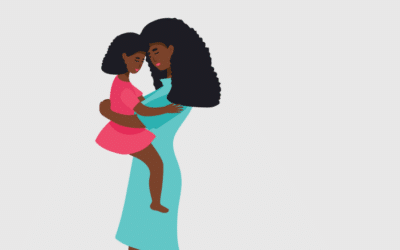By GAIL SCHONTZLER , Bozeman Daily Chronicle
BOZEMAN (AP) — Her name is Heaven, but much of her childhood sounds like hell.
Heaven Reel was placed in foster care at age 16, after state social workers found evidence of neglect or abuse in her home.
“We were always hungry,” Heaven said.
She recalls grocery money squandered on alcohol. Having to eat crab apples from people’s yards. Getting bread at the Food Bank. Staying locked in her room at night and listening to beatings. Hearing, “I am the God of this house and I control every one of you.” Trying to step in to stop someone being choked and getting three of her ribs fractured. Running away. Ending up in the hospital. Sleeping in a car.
Heaven said she reported the abuse and neglect to people at her middle school, and called police and Child and Family Services, time after time.
Keep making reports, they told her. Yet no one intervened enough to stop it.
“She begged for help for a long time,” said Katie Davies, Heaven’s foster mom. As a teenager, Heaven had to become the adult for her younger siblings, Davies said. She would save the money she earned at restaurants and babysitting to buy clean clothes and school supplies for her sister and brother, so they wouldn’t feel as judged by other kids as she had.
One day, Heaven came home and found an adult passed out, a large knife gripped in one hand and a row of wounds on the other arm. She took photos of that and the empty vodka bottles littering the floor.
That’s when Child and Family Services had to act, Davies said. “That was the final straw.”
Today, Heaven is 18, emancipated and building her own life, thanks to support from her “awesome” foster mom, the boyfriend who “saved my life” and her own determination.
She just graduated from the Bridger Charter Academy at Bozeman High School. She wants to start cosmetology school this fall. She and her boyfriend are raising their 7-month-old daughter, Alma.
Heaven said she wants Alma, a cheerful baby who likes meeting new people, to have a better childhood than she had.
“I love it when she puts her head on me,” said Heaven, snuggling with Alma. “She’s the best thing that ever happened to me.”
Turning 18 can be a critical time for foster kids, when many “age out” of the state foster system, leave high school, lose many of the mentors and services they had as kids and enter the adult world.
Each year about 22,000 to 23,500 foster kids age out of the foster care system nationally, according to the nonprofit Foster Club. In Montana, an average of 54 kids a year aged out of the system from 2010 to 2017, according to the state Department of Public Health and Human Services.
Once foster kids felt dropped off a cliff at 18, forced to sink or swim on their own. In some cities they would be dropped off at homeless shelters with a plastic bag carrying their only possessions.
In 1999 Congress passed the Foster Care Independence Act, which created the Chafee Foster Care Independence Program, greatly expanded eligibility and doubled the funding to $140 million to help foster kids make a better transition to adulthood.
The Chafee program provides millions of dollars a year to state and local agencies to help vulnerable foster kids with education, housing, health, finding jobs and learning independent living skills. Montana received more than $741,000 in Chafee grant funds from 2015 to 2017, DPHHS reported.
Since 2003, the states have also received federal money to provide “education and training vouchers” or ETVs, worth up to $5,000 for foster youth to attend college or vocational training or get help in landing a job.
Despite that stronger safety net, national statistics are discouraging. Only about 3 percent of former foster kids earn a college degree. One in four is reported to have experienced post-traumatic stress disorder.
A 2010 study by the University of Chicago’s Chapin Hall policy research center followed 600 former foster kids in three Midwestern states for eight years.
That study found that by age 23 or 24:
– Less than half had jobs.
– About a quarter had been homeless.
– More than 75 percent of young women had been pregnant.
– Nearly 60 percent of young men had been convicted of a crime, and 80 percent had been arrested.
SAFETY NET
Jackie Haines and Jeremy Alcoke are on the front lines when it comes to creating a safety net for foster kids.
They work at the nonprofit Human Resource Development Council office in downtown Bozeman, where Haines is economic development director and, thanks to the Chafee program, Alcoke is youth adviser.
Alcoke’s job is dedicated to helping foster kids make the transition to adulthood. He works with up to 30 kids a year in Gallatin, Park and Meagher counties.
Last year the eligibility age for foster kids who can get help from advisers like Alcoke was expanded from 16-to-21-year-olds to 14-to-21-year-olds.
“We’re trying to catch kids earlier,” he said. “The sooner you can catch them, it seems, they have better outcomes.”
If kids want to go to college, Alcoke helps them figure out what they need for grades, or finds tutoring or financial aid. He helps them develop plans for how they’re going to live independently, and then tries to find support programs in the community to “wrap around” them.
Alcoke can offer kids incentives — $25 for progress toward one of their goals, like earning better grades in high school, getting a driver’s license or Social Security card.
Part of the difficulty for kids is having a stable adult relationship, Haines said. If that’s not happening with a parent, foster parent or grandparent, it might with their Chafee caseworker like Alcoke.
“The Chafee program is amazing in my opinion,” Alcoke said. “When you see a kid who turns 18, moving into a different life stage, and you see success in that, it’s amazing.”
Recently, he said, he’s had a couple kids who he helped apply to college outside of Montana. They got a U-Haul truck, stopped by to get a gas voucher from him, and then drove off into their futures.
“I hugged ’em, wished them luck,” Alcoke said. “They’re both still in school. Struggling, but getting through.”
Two key challenges foster kids face at 18, Haines said, are education and housing. Bozeman’s lack of affordable housing and tight rental market make things especially tough.
Former foster kids may be working full-time, but they have to compete with college students, professionals and young families, she said. They probably don’t have a credit rating, so HRDC will help them get a secured credit card. They may move into a place that has no stove, so HRDC will help find a stove. Heaven said Alcoke helped her with a trailer.
Haines said she wishes more people were aware of the traumatic experiences foster kids went through, and not mentally put them in a box or classification.
“I wish people would have compassion,” she said. “You don’t become a foster youth unless you’ve had a rough experience.
“When you hear their stories, it changes you,” Haines said, touching her heart. “If (a family member) is breaking your ribs, and no one is saving you, it changes how you interact with the world.”
LAPTOPS AND FRIENDS
This is a stressful time of year for Rhonda Safford, who is planning for next week’s start of Reach Higher Montana’s annual Summit for Youth in Foster Care.
“The summit is exhausting, but it’s the best thing I do each year,” said Safford, programs manager in Helena. “I love my job and working with the kids.”
It’s a free, four-day event for foster kids ages 16 to 19 to help them make the transition to work or college. This year some 53 kids are coming — up from 40 kids last year.
It’s the largest group in the 12 years that Montana has held the youth summit — which may be because word is getting out, she said, or because Montana has seen rapid growth in the numbers of kids in foster care.
The summit, which has been held at Montana State University in the past, will be at Montana Tech in Butte this year. It gives foster teens a chance to experience what it’s like to go to college. They stay in dorm rooms, eat at the cafeteria and attend classes to learn life skills, like how to land a job, manage money and build relationships.
One big incentive for foster kids to attend is that they can take home a free laptop — the most popular choice — or get other help, like a job-hunting outfit or assistance in setting up a household.
They can also apply for education and training vouchers (ETVs) of up to $5,000 a year to help cover the cost of college or vocational training. One year a young woman got help to become an apprentice plumber.
“We help them make a plan — ‘At 18, what are you going to do?'” such as finish high school, go to college, get a job, Safford said, “so they don’t just fall off that ledge.”
The summit also lets foster kids meet others and make friends who have similar experiences, Safford said, “so they don’t feel all alone.”
The summit is making a difference. “The statistics are terrible,” she said. Seventy percent of foster kids want to go to college, but only about 20 percent go and just 3 percent graduate.
“We had 10 percent of our kids graduate,” Safford said, or about three times better than the national average.
This year a youth advisory board was created so foster students could help to plan the summit. They wanted to add programs on suicide prevention, the Job Corps and other topics.
The FosterClub, a national nonprofit based in Oregon, also works with the Montana summit. Two Montana teens have been chosen as FosterClub All-Stars, a program that lets young people who have successfully moved from foster care to adulthood serve as leaders and mentors for younger kids.
If there’s one thing she wishes she could change for foster kids, Safford said, it’s that they often get moved so often, yanked out of their homes or schools, moved to new schools, new foster homes or group homes, assigned to new caseworkers.
“It’s so traumatic for them,” Safford said. “It’s miserable.
“It’s heartbreaking what they’ve been through,” she said. “It’s amazing how normal they are. They’re fabulous kids. They just want to be loved and heard and respected, like any other youth does.”
SUCCESS STORY
Katie Yother Champion says that thanks to her first foster family, “I turned my life around in seventh grade, from class druggie to Turn Around Student of the Year.”
Champion, 34, is a foster care success story. She graduated from MSU in 2006. Today she’s living in Bozeman, married and working as a pharmacy technician.
A former FosterClub All-Star, she has often spoken on the challenges facing foster kids across Montana and across the United States.
She grew up in Miles City, and was 7 or 8 years old when she and her twin sister were placed in foster care for the first time. Her parents were going through a difficult divorce, she said, and home was not a healthy environment.
The girls returned to their mom’s home for a few years. But by age 12 or 13, Champion said, she was acting out, smoking pot and drinking. Her mom was in a drunken driving accident and her parental rights were challenged, so she asked the foster family to take back the twins.
Though Champion credits her first foster family with straightening her out, she still remembers the hurt she felt when the family went on vacation and left the twins behind.
“If felt horrible,” Champion said. “It was very upsetting. I ended up with bad friends, drinking.”
The twins were placed with a second foster family, to whom Champion remains very grateful. The first thing the family did was take the girls, then freshmen at Custer County District High School, to the store to pick out paint for their rooms. The mom, Emily, sewed matching curtains. They were respectful about their biological mother.
“They integrated us into their family,” Champion said. “They gave us the encouragement to get involved in positive things in high school.”
She ran for class secretary as a freshman, class president her sophomore and junior years, and was elected student body president her senior year.
After graduating from high school in 2001, the family no longer received state financial support to care for the girls. But the family kept the twins that summer and drove them to MSU in the fall.
“We were very fortunate they didn’t send us packing,” Champion said.
Once at college, she said, “We were worried about what to do on the holidays.” The twins ended up spending some holidays with their biological mother and some with their foster family.
“We were extremely fortunate,” she said. “Not everybody had a place to go for the holidays, nobody to borrow $20 from” when they couldn’t make ends meet.
Champion became the first Montana student to graduate from college with help from education and training vouchers (ETVs). The $5,000-a-year vouchers were “huge,” she said, in helping to pay their living expenses.
As a FosterClub All-Star, she spoke to foster kids all over the country, and discovered many didn’t have the positive, ongoing relationships with family and adults that she and her sister had.
“I feel we were the exception to the rule,” Champion said. “We’ve been extremely lucky to have a network of support, with our foster parents and biological parents.
“They’re a huge part of my life,” she said, “and even my mother will lean on them.”






